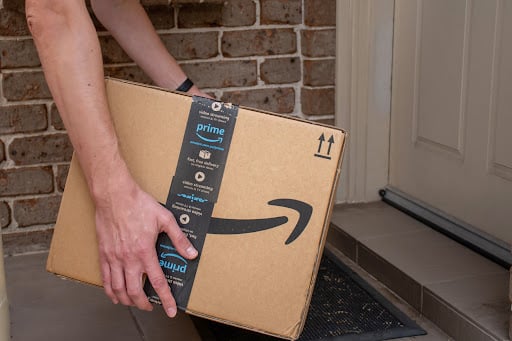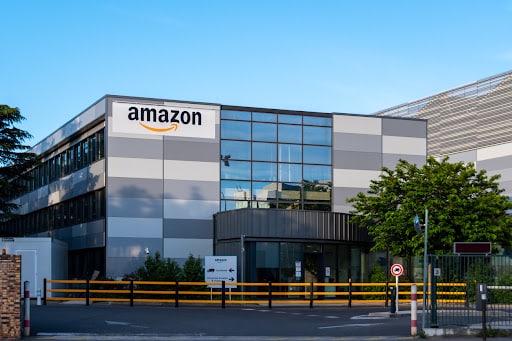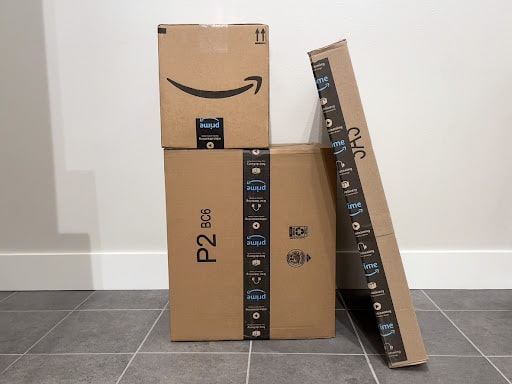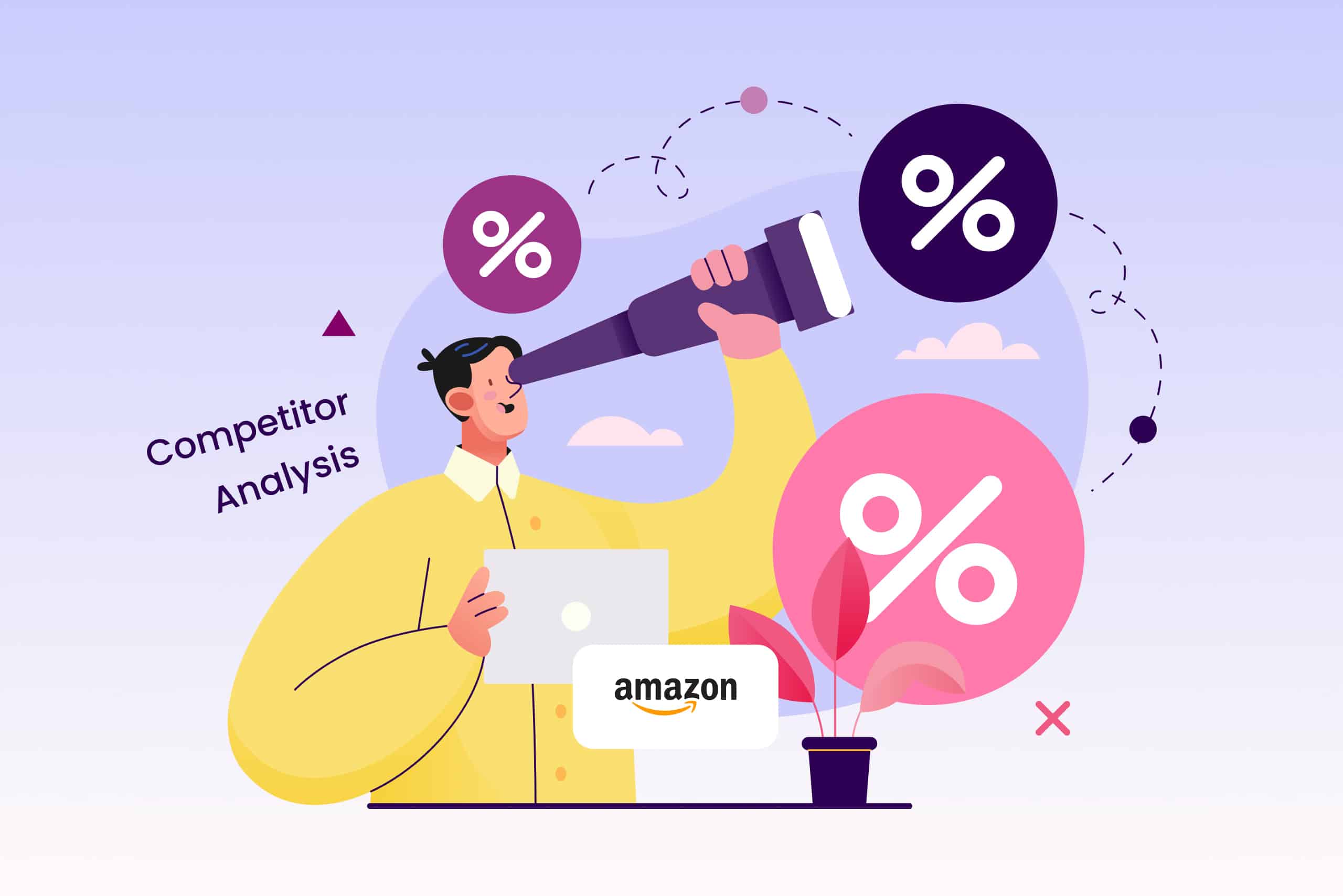Before joining Amazon, your idea, product, and strategy may seem like a rare gem in a sea of stones. However, it doesn’t take long to realize that with over 9 million sellers and thousands joining daily, selling on Amazon is as competitive as it gets. So, how do you stand out? And how can your customers find you?
The answers lie in a comprehensive Amazon competitor analysis. It can give you the insights you need to identify your competitors in this vast digital haystack and understand their strategies, strengths, and weaknesses. Targeting your competitors will enable you to craft a unique value proposition that sets you apart and attracts your target audience.
This guide has everything you need to know about Amazon competitor analysis to perform it thoroughly, from what it is to how to complete it and the tools that can simplify it. Whether you’re a seasoned seller looking to refine your strategies and increase market share or a newcomer aiming to make a mark, it’ll equip you with the insights you need.
Key takeaways
- The goal of conducting an Amazon competitor analysis is to understand all aspects of your competitors’ marketing and merchandising efforts.
- A well-rounded analysis takes considerable time and effort, but pays off in the long run as you learn how best to structure your strategies moving forward.
- Manual analyses are possible, but leveraging automated tools and software can help streamline the process, distill the data you need, and help you make the changes to see the results your brand is looking for.
What is an Amazon competitor analysis?
An Amazon competitor analysis is the process of evaluating and studying your Amazon competitors to understand their strategies, strengths, weaknesses, and market positioning.
It involves assessing various aspects of their business, such as pricing strategies, product listings, or advertising approaches, to gather insights to inform and improve your merchandising strategies.
Is an Amazon competitor analysis important?
It sure is. On Amazon, your brand and products are constantly surrounded by competing items, from the product listings pages to search results pages and ad placements.
There’s almost never a time when a shopper will only see your product, except maybe in your Brand Store. However, even potential buyers in your Brand Store will eventually be directed to product listing pages, where Amazon will bombard them with competing products yet again.
Your finger should be on the pulse of your competitors’ businesses to win in such an environment. You must understand what they are doing, and why they are doing it.

How to perform an effective Amazon competitor analysis
Here are some of the steps to follow to perform a thorough competitor analysis:
Find your competitors
It goes without saying that you must find your competitors to begin your analysis.
For the most part, it’s easy to find your competitors on Amazon. Simply search for keywords related to your product within the marketplace, make a note of the top-selling brands in the search results, and categorize them into primary, secondary, and tertiary competitors.
- Primary competitors deal with the same products you do and target your customers.
- Secondary competitors deal with similar products but target a different audience (for example, selling luxurious versions of your product).
- Tertiary competitors don’t compete on a product or service level but can still impact your sales.
For example, suppose you sell men’s memory foam running shoes.
- Start with a broad keyword like “running shoes.” As you would expect, the search results are full of different sellers. Categorize them into primary, secondary, and tertiary competitors.
- Search for keywords more specific to your product, like “memory foam running shoes” and “men’s memory foam running shoes.” The top products for such a niche keyword are your primary competitors.
You should focus on your primary competitors, but you shouldn’t ignore secondary and tertiary competitors. Analyzing all of them will give you a comprehensive understanding of the landscape, as each category provides valuable insights you can use to identify gaps and refine your marketing and offerings.
Keyword analysis
Keeping up with the competition on Amazon is all about keywords. Optimizing your product listings with the right terms improves their visibility in search results and sponsored ad campaigns, so shoppers are likely to find, and even click on them.
Keyword analysis is the process of researching and evaluating the keywords that Amazon shoppers use when searching for your products.
If you used the above-noted search method to find your competitors, you already have a list of broad (like “running shoes” from our example) and long-tail keywords (like “men’s memory foam running shoes,” also from our example) that your competitors use.
But you shouldn’t stop there. You can identify and analyze keywords through:
- Free Amazon Chrome Extensions,
- Amazon AutoSuggest and other third-party keyword research tools,
- Examining the identified competitor’s product listings to find the keywords they use.
If you use a keyword research tool, use one that can indicate the search volume of each keyword. High-search-volume keywords can drive more traffic, but they may be challenging to rank for due to the competition. With Trellis, our keyword research tool lets you see the difficulty of ranking for each term you choose.
Create a list of all the keywords relevant to your product or brand and move on to the next step: analyzing product listings.

Product Listings
Once you know who you are up against and what keywords they use to show up on search results, the next step is to analyze their product listing.
Assessing product listings will help you identify strengths you can emulate, such as compelling product descriptions, effective use of keywords, and unique features to highlight. It’ll also help you identify weaknesses, such as poor image quality, missing product information, and low ratings, that you can use to your advantage to optimize your listings.
The first step is to compile a list of all your competitors’ products that compete with yours. There may be too many to count, especially if you have many competitors, so the top products in the search results should do.
Open the product listing of every product in your list and assess the following areas:
Titles
Product titles inform shoppers and Amazon’s algorithm what the product is and whether it’s relevant to their search query. To analyze the titles, go over each option and ask yourself the following questions:
- Is there anything I can add or remove to improve the title?
- Is the title missing any information the customer needs to know to click it?
- What keywords are in the title?
- Does it sound promotional or like clickbait?
- Does it use Amazon’s recommended format (brand + model + product type)?
Bullet points
Bullet points in product listings often contain the most crucial selling points or benefits of the product. This is because shoppers can quickly scan them rather than reading the full listing. Bullet points can influence a potential customer’s purchasing decision within seconds, so consider using them for your own products.
As you read through the bullet points of each product listing, ask yourself:
- What tone are they using?
- What features and benefits do they highlight?
- What information is missing?
Compare these listings with your own to see if you missed any information and add it.
Descriptions
Reading your competitor’s product descriptions can help you understand the information your product description needs and how it can be presented to make it effective.
As you read through competitor descriptions, ask yourself:
- Do they use filler words?
- What product details do they overlook?
- How are they structuring their product descriptions?
Images
Unlike shopping in brick-and-mortar stores, Amazon shoppers cannot touch a product to decide whether or not to buy. Instead, they rely on images. Assessing competing products’ images can help you understand how your competitors visually present their products.
You should evaluate aspects like:
- Image quality
- Angles
- Lighting
- Overall appearance
Take note of things you like and don’t like about these photos, and enhance your images accordingly. The best-quality images and infographics can increase the likelihood of clicks, conversions, and sales.
Reviews
Amazon product reviews can provide you with a trove of information about your competitors and their products that isn’t immediately apparent, or that they don’t share in their listings. These reviews can be overwhelming to read through, so try selecting 3-5 from each star rating to assess.
Your analysis of each product review should answer the following questions:
- How many reviews does each product have?
- What is the average star rating for each product?
- What do reviewers dislike about the products? How can your product resolve these issues?
- What features and benefits do customers love? How can you demonstrate them in your listings?
- Does the competitor respond to reviews? How do they interact with the shoppers?
Analyzing reviews can reveal the weaknesses and strengths of a competitor’s product listing to improve your own by addressing their weaknesses and highlighting the strengths. For example, if a review says exactly what is wrong with the product, you can assure shoppers who click on your listing that your product doesn’t have those same problems.
Questions and answers
On Amazon, potential buyers ask questions about a product in the Q&A section on product listings. Both sellers and other customers can respond.
These questions can provide valuable insights into customer concerns, inquiries, and interests. Analyzing them can help you:
- Identify gaps and areas for improvement by checking the recurring issues or unanswered questions.
- Identify unique selling points and features that competitors highlight in the answers.
- Keywords and phrases that customers use.
- Emerging customer needs.
You can use these insights to address customers directly to position your product as superior.
Social media
Amazon competitor research should also involve your competitor’s off-Amazon marketing efforts, like their social media presence. Several studies and research have revealed the huge impact that social media has on eCommerce and brand awareness. To mention a few:
- A 2022 report by Sprout Social found that 68% of consumers made at least one purchase directly from social media in 2021.
- A study published in 2020 found that about 90% of people buy from companies they follow on their social networks.
- A report by Retail Touchpoints found that 76% of consumers have purchased a product they saw in a brand’s social media post.
When analyzing your competitor’s social media presence, consider all angles. Your research should provide answers to questions like:
- How do they use social media?
- What platforms are they on?
- How many people follow them?
- What do they post, and how often do they post?
- How much engagement does each post get on average?
- Do they partner or collaborate with influencers to promote their products?
You can see which platforms competitors promote most by checking their social media links on Amazon.
Beyond getting some insights into best practices for your own business, a social media analysis provides valuable insights into how your competitors engage with their audience, promote their products, and build their brand image.
Share of shelf
Your share of shelf is how much space your brand and products have on the first page of Amazon search results through organic and paid traffic.
Analyzing your competitors’ share of shelf reveals how well their products rank organically and how effective their ad campaigns are. It provides insights into their market positioning and presence. Here’s how you can analyze the share of shelf:
- Conduct searches for the keywords you identified in the keyword analysis step. Check to see where competitors’ products appear in the results and how frequently they appear.
- Assess the categories and subcategories where competitors’ products are. Do they dominate their categories and subcategories? If so, it indicates a strong share of shelf.
- Note the placement and frequency of competitor ads if they use PPC advertisements.
While this process is worthwhile to optimize your strategy for increased visibility on Amazon, it can be time and effort-intensive if you assess and track the share of shelf of different keywords, products, and campaigns. With Trellis, we make it easy to understand how your products and brand perform against competitors, with tools that provide precise analytics.
Additionally, a high share of shelf indicates good conversion rates. The Amazon A9 algorithm uses conversion rate to rank products organically and determine the winner of ad space. So, if your competitors have a much higher share of shelf than yours, it could indicate that you need to improve your conversions.
Pricing
Pricing significantly influences customer purchase behavior, especially in eCommerce, where they can access different prices in a few clicks.
Suppose you searched for a product on Amazon, and the first two items in the search results are identical except that one costs $199 and the other costs $209. In that case, which would you go for? Most would pick the lower-priced option.
Pricing analysis allows you to position your products strategically in relation to the competition. You can be a price leader, follower, or offer a unique value proposition.
You can analyze competitors’ pricing by:
- Comparing the base prices of your products with your competitors.
- Analyzing their pricing strategies, such as premium, value-based, discount, or competitive pricing.
- Keeping track of the ongoing promotions, discounts, or special offers your competitors run.

Advertising
Before running ads, it’s a good idea to analyze your competitors’ Amazon ad campaigns. This way, you’ll gather valuable insights into their strategies and learn from their successes and failures, which can help you enhance the efficiency and effectiveness of your advertising efforts.
Analyzing their ad campaigns will allow you to create more compelling ad copies, videos, and images that resonate with your target audience.
Your ad campaign analysis should focus on the following aspects:
Keywords
Analyze the keywords your competitors target in their ad campaigns to reveal their product focus, audience targeting, and strategies they use to drive conversion.
Ad campaign keyword analysis involves:
- Identifying the keywords they are targeting in their advertising campaigns. The process for identifying keywords is the same as in the keyword analysis step mentioned above.
- Evaluating the relevance of your competitors’ keywords. Do they accurately represent the products and align with the target audience?
- Assessing the effectiveness of your competitors’ keywords by examining metrics like click-through rates, conversion rates, and ad positioning.
- Evaluating how competitors balance broad, phrase, and exact keyword match types. This can involve searching for these keywords and noting whether the competitor products appear in the search results.
- Investigating their bidding strategies to understand how much they spend to bid the same or higher to achieve the same or higher ad placements.
Share of voice
Your share of voice on Amazon is how much space your brand and products have on the first page through paid traffic. This is dependent on how much you spend on sponsored ads.
This is different from share of shelf, which depends on how well your ad campaigns perform and how well your products rank organically.
To analyze your competitors’ share of voice, conduct searches using the keywords you discovered earlier, and for each search, take note of which competitors’ ads appear, how frequently they appear, and where they are positioned on the page (e.g., top, middle, or bottom). Track their ad appearance, positioning, and frequency over time to identify changes in their advertising strategy. For example, a sudden increase in share of voice can mean they have shifted their marketing approach or product positioning.
This share of voice analysis provides insights into the reach and effectiveness of their advertising campaigns. A competitor that frequently appears in prime positions, like at the top of the page, has a dominant share of voice.
With these insights, you refine your keyword selection, bidding strategies, and ad placements to improve your advertising effectiveness. For example, you can outperform your competitors and increase your share of voice by bidding on the same high-impact keywords they use.
Timely presence
The timing and frequency of your competitors’ advertising campaigns provide key insights into their strategic approach and align your advertising efforts. Start by analyzing how often your competitors run their advertising campaigns. Do they advertise consistently throughout the year or during specific seasons, holidays, or events? Do they employ different campaigns for the seasons, holidays, and events? How effective are they?
You should also look at any changes in marketing efforts before the launch of new products.
You can use insights you gain from analyzing the timing and frequency of your competitors’ advertising to:
- Schedule your campaigns when competition is relatively lower to ensure better visibility.
- Focus on low-competition products on Amazon.
- Capitalize on increased consumer activity and purchasing during seasonal trends and events by tailoring your campaigns to match the season.
- Understand how to create anticipation and buzz before launching a new product for a successful product introduction.
- Increase or decrease your ad spend based on competitors’ activities to optimize your budget for maximum impact.
- Adapt and innovate faster than your competitors to outperform them in reaching your target audience effectively.

Discounts and deals
Have you ever looked into how your competitors use discounts and promotional deals? While conducting Amazon competitor research, this information can help you understand their pricing and customer attraction tactics.
You should identify what discounts they offer, such as percentage discounts, tiered discounts, or buy-one-get-one-free discounts. Analyze how frequently they offer them and how long they last. Do they align with specific events, holidays, or product launches?
Discount and deals analysis also involves comparing the regular prices of the products. Do the competitors adjust the price before offering discounts to maintain profit margins while creating the perception of a price reduction?
This analysis can help you understand the use cases and effectiveness of different pricing changes. You can also use what you discover as a way to learn from their successes and failures to create compelling offers that attract customers while ensuring product profitability.
Percentage of discounts
Analyzing the percentage of discounts your competitors offer can help you understand their promotional strategies. You can do this by:
- Collecting data on the percentage and type of discount your competitors offer.
- Looking for consistent patterns in the discounts they offer, such as tending to offer a specific discount or discount range more frequently than others.
- Checking which products they frequently discount and which they rarely or never discount.
- Analyzing if the percentage of discounts varies with seasons, special events, or holidays.
- Comparing the discount percentages of different competitors in your niche to identify areas for improvement.
Insights from this analysis can help you identify gaps in your discounting approach. Filling these gaps can improve your discounting strategy with compelling promotions tailored to specific product categories, thus attracting a broader customer base and driving higher sales and revenues.
Timing of discounts
Examining the timing of discounts can reveal how competitors capitalize on the increased demand of specific seasons or major events, such as holiday seasons, Black Friday, and back-to-school. This information can help you align your discounts with similar high-demand periods to attract and engage potential customers effectively.
Analyzing the timing of discounts can also benefit you in the following ways:
- It can reveal the competitors’ strategies. For example, consistently offering discounts before other competitors could indicate a strategy to capture early buyers and gain a competitive advantage.
- It can shed light on how competitors manage their inventory and product cycles. For example, some discounts may indicate efforts to clear out old inventory.
- You can gain insights into when customers are most receptive to discounts by analyzing discount timing in relation to consumer behavior.

Sales
The last step of effective Amazon competitor research is monitoring their monthly sales. This involves studying how your competitors perform based on revenue, and it can help you in:
- Benchmarking: You can compare your sales to your competitors to assess your performance against industry averages to identify areas for improvement.
- Analyzing market trends and demand: Tracking competitors’ sales can give you insight into market trends and customer demands for your products, which can help in adjusting your inventory, optimizing product offerings, and predicting future trends.
- Identifying successful strategies: You can check the effect that the strategies your competitors implement, such as new marketing campaigns, product positioning, and keyword strategies, have on sales. If successful, you can copy them, and you can avoid them if they are unsuccessful.
- Understanding product performance: Understanding which products in your niche perform well and which don’t allows you to fine-tune your product prioritization to boost sales.
- Identifying opportunities: Knowing competitor sales can help you discover underserved segments and gaps in the market, making space for product development or marketing campaigns to expand your customer base.
Competitor sales analysis is especially useful when you want to introduce new products so you can have the foresight to know how to position them and whether they have enough demand. A tool like our Amazon Sales Estimator can simplify the analysis for you.
Use an Amazon competitor analysis tool
Many of the tasks and processes involved in Amazon competitive analysis can be very time and effort-intensive if you handle them manually.
Take analyzing product listings, for example. How long would it take to collect product listings of all the competing products from different competitors and analyze the titles, descriptions, bullet points, images, and all other aspects? Or tracking price fluctuations? Or review analysis?
Manual analysis is impractical and inefficient if you want to stay competitive on Amazon, which is why you need an Amazon competitor research tool to simplify the tasks and processes involved.
If you want to streamline and automate the laborious tasks of competitor analysis, try our Amazon PPC Competitor Analysis tool. It can help you optimize and manage your PPC campaigns by offering features such as:
- Keyword research
- Bid management
- Performance tracking
- Campaign optimization
- Reporting
Final thoughts on conducting an Amazon competitor analysis
A competitor analysis may sound like a lot of work, but it is critical in the Amazon landscape. Understanding your competitors’ strategies, strengths, weaknesses, and market positioning empowers you to make informed decisions to stand out and ultimately thrive.
Trellis has several tools you can use to simplify your Amazon competitor analysis. For example, the Amazon Sales Estimator can facilitate your sales analysis, the Amazon Keyword Difficulty Tool can enhance your keyword analysis, and the AI-based Amazon Pricing Tool can improve your pricing analysis.
Schedule a personalized demo today to learn more about how our platform and software can enhance your Amazon competitor analysis.



